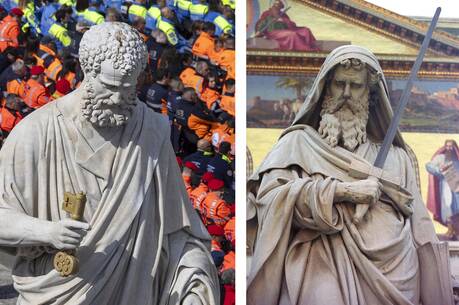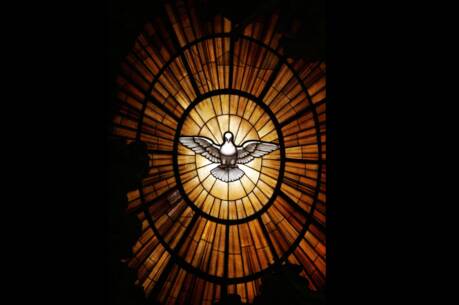A Wedding Invitation: Please Respond!
Late February, with Lent around the corner, is not a time when we ordinarily think of weddings, yet nuptial imagery sets the tone for the liturgy. In the first reading, the eighth-century prophet Hosea enacts in his life God’s enduring love for a people that has turned away to worship Canaanite gods (Hebrew baals, "masters"). God commands Hosea, "Go, take a harlot’s wife...for the land gives itself to harlotry, turning away from the Lord" (1:2). It is debated whether this is a command to marry a prostitute, to seek out an unfaithful wife, or is purely a prophetic allegorical vision.
Whatever the interpretation, the focus of the narrative is God’s desire to "allure her and lead her [Israel] into the desert and speak to her heart" in order to renew the marriage covenant of love with her. The people will now call God "my husband," not "my master" (Hebrew baal). God will renew the people in right and in justice (a couplet that suggests right relation to God and concern for the vulnerable in the community), in love ("steadfast love," a prime covenant quality) in mercy (tender mercy or compassion, the feeling that a woman has for the child of her womb) and fidelity or enduring care. These divine qualities, named again in the responsorial psalm, offer the most condensed and eloquent biblical descriptions of God and, as covenant promises, are to shape the lives of individuals and communities.
The Gospel offers a collection of sayings in which Jesus defends his actions against objections of the Scribes and Pharisees. Such material reflects two different periods: the first, during Jesus’ lifetime, when there were disputes between Jesus and particular Jewish groups; the second, an era of growing estrangement between Judaism and Christianity 40 years later, when the Gospels were being composed. Fasting is associated with rites of mourning, repentance or prayers of supplication and symbolizes self-effacement and trust in God. Fasting expresses also a longing for the final or eschatological intervention of God in history. The image of Jesus as bridegroom picks up the Old Testament motif of God’s spousal love for the people of Israel and also anticipates the Messianic Age, which in Jewish writings contemporary with Jesus is symbolized by a wedding banquet. Jesus’ response affirms that his presence in history is the beginning of this final age (Mk. 1:14-15), a wedding time of feasting, not fasting, and of rejoicing, when ordinary life is suspended. In parabolic sayings, which show Jesus as a keen observer of ordinary human life, he compares this new situation to repairing old (most likely leather) garments with a new patch which will rip off as the leather ages, or with putting fermenting wine into worn out skins which will then burst.
Mark’s readers, like ourselves, exist at a time when the bridegroom has been taken away and the new Messianic Age has not arrived in its fullness. It was also a time of that growing estrangement between Judaism and nascent Christianity whose effects the church is only now confronting, since Christian anti-Semitism has sadly been fostered by Paul’s reference to the "written law [that] kills," which the following verses identify with the Mosaic covenant. In the Vatican document We Remember: A Reflection on the Shoah (1998), the church recognizes the tradition of anti-Semitism, saying that "despite the Christian preaching of love for all, the prevailing mentality for centuries punished minorities." In announcing the Great Jubilee, Pope John Paul II has called for a time of rejoicing but also for repentance over the acquiescence by the church "to intolerance and even the use of violence in the service of truth" (Tertio Millennio Adveniente, No. 35).
The deeper meaning of repentance and the path to mutual love and respect between Jew and Christian emerges from Hosea and Psalm 103. When we are unfaithful, a loving God seeks us out in the wilderness and speaks to our hearts offering a renewed relationship in justice, steadfast love, tender mercy and enduring fidelity. This is the God of Israel and the Father of Jesus, the Christ, the bridegroom who has not simply been taken away but "loved the church and handed himself over for her" (Eph. 5:25). The God who renews the church through searching love is the new wine that shatters the contemporary wineskins of shrunken visions.
This article also appeared in print, under the headline “A Wedding Invitation: Please Respond!,” in the February 19, 2000, issue.







